India Business Law Journal asked law firms to go public with their hourly billing rates. The move was controversial and gave rise to diverse opinions over the value for money that clients receive Alfred Romann tells the story
In a step that Ashok Sharma, general counsel at MMTC, believes “will go a long way towards establishing transparency and dispelling many myths surrounding hourly billing rates,” India Business Law Journal invited law firms in India to publicly reveal their fees.
Of more than 100 law firms that were invited to take part, 25 agreed, disclosing their hourly rates for five categories of lawyer ranging from junior associate to managing partner.
A welcome response
“I welcome this move,” said Kuldeep Drabu, director of Videocon Industries in New Delhi. “This will help clients and prospective clients to take decisions based on the cost and capability of each firm … I have found significant sensitivity among law firms to discussing their fee structures.”
Based on billing information supplied by the 25 participating firms, the average hourly fee charged by a junior associate is US$90. The figure rises to US$130 for a senior associate and US$175 for a junior partner. Senior partners charge an average of US$230 for an hour’s work, while managing partners charge an average of US$275.
It is important to note that these results, while informative, are not representative of the entire legal market. Most of the firms that participated are mid-sized firms. Very few small firms and none of India’s largest firms – measured by number of lawyers – chose to take part.
Furthermore, the table of billing rates does not necessarily provide a like-for-like comparison. Billing rates may vary according to many factors, not least a firm’s reputation, the experience of its lawyers and its ability to handle complex work. This report makes no attempt to “rank” law firms by the quality of their work; rather it is intended to facilitate transparency and accountability in the market.
A sensitive subject

“We work in a very transparent environment,” said Vineet Bhagat, of KG Bhagat & Co, another participating firm, “and we have no hesitation in sharing the information.”
Ashok Sharma at MMTC, an international trading company with an annual turnover of more than US$5 billion, had similar sentiments. “This is a good initiative taken by Indian law firms,” he said.
But not everyone agrees.

“Our rates are confidential to the clients and I am afraid we will honour this,” explained the managing partner of one law firm in Mumbai. “We have discussed this internally. We don’t want our rates published,” said another.
Calls for transparency
Jane Niven, general counsel, Asia-Pacific, at Jones Lang LeSalle has found it less than easy to obtain billing information from Indian firms.
“Requesting information relating to billing is not as easy as we would have expected, and has been frustrating in terms of trying to understand what is being billed,” she explained.
When looking to create a panel of legal providers, the international real estate company met with “strong resistance from law firms to provide any [billing] information”.
“In one instance, a law firm told us that it was against the law to provide such information,” she said.
At least two law firms have come up with an approach that is almost unheard of in the Indian market: They have posted their fees on their websites.
One of the firms is Hathi & Partners, headquartered in Mumbai. Another is Delhi’s India Juris.
The India Juris website is not publicly accessible; prospective clients have to get a password from the firm to view it.
Once inside, the site includes an extensive guide to pricing. It lists fees for all kinds of legal services from corporate work and audits through to patent work and business registration.
“The legal profession in India is not as organized as it is in the Western world,” said India Juris partner Sameer Rastogi.
“The fee structure is not standard … There should be some transparency.”
In the experience of Drabu at Videocon, “there is hardly any transparency,” but opinions vary.
Vinod Mahboobani, vice-president (legal) at Yum! Brands, has found law firms to be “fairly transparent in sharing the rates openly when asked”.
So has Andrew Ong, a Singapore-based director at Nokia. “We’ve had a long working relationship with [Indian lawyers] and there is transparency if you ask for it,” he says.
“Horror stories”
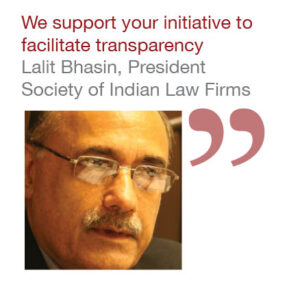
“Publishing hourly billing rates is only a first step … Clients also need to be able to trust that there will not be any ‘sand-bagging’ to the hourly bills they receive,” cautioned Ong.
Another concern, said Pravin Anand, managing partner of Anand and Anand, one of four IP firms that participated in this report, is a tendency for law firms to charge different fees to different clients.
“Client A may have one fee structure. To client B, you charge something else and client C may have a different fee structure altogether because that client has deep pockets,” he explained.
Drabu of Videocon agreed.
“My experience also indicates inconsistency in the fee structures of most of the firms,” he said.
“Fees should be [based] on the capacity of the advocate, not on the payment capacity of the client,” argues Rastogi of India Juris.
Some firms have even been known to take advantage of clients with difficulties or severe time constraints.
“There are lots of horror stories in terms of the fees they charge” warns Anand.
The frequency of such “horror stories” is, hopefully, less now than it once was. This is perhaps due to higher demands on the part of corporate clients and the increasing professionalism of firms.
“The quality of work is better now,” said Ranjeev Dubey, managing partner of NDLO (South). “Back in 1993, I had foreign law firms reviewing my M&A work, but not now.”
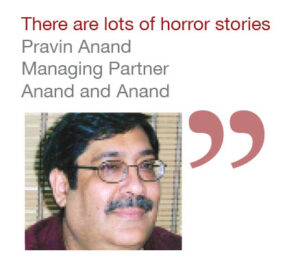
Some lawyers are unapologetically enthusiastic about the relative strength of the Indian legal profession.
“The quality of work is very high, leaving little room for improvement,” said Paritosh Sinha, of Sinha & Co. “Indian law firms are the future of the world.”
Rising standards … and prices
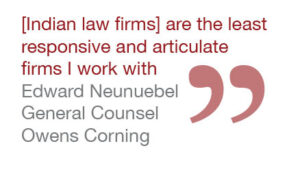
Indian law firms are not always inexpensive.
In larger cities like Delhi, Mumbai and Bangalore, rates are similar to those in Singapore and China, although still lower than those charged by firms in Hong Kong or Sydney.
“Indian law firm rates are not cheap,” said Ong at Nokia, noting that this is a misconception many newcomers to India face.
However, “depending on the volume of work and the relationships you have with the law firms, I would say that their charges are palatable”.
“It is in the mid-range firms where the best value for money can be found. The problem is that most of them are not big enough to offer a one-stop shop,” said Ong.
When compared to international law firms from New York or London, the prices charged by Indian firms compare favourably. Mahboobani of Yum! Brands recalled being approached by an international lawyer with rates that left his CFO apoplectic.
“I can vividly remember his answer: ‘Vinod, do you know how many pizzas and chickens our stores need to sell in order to pay for an hour’s legal services!’”
But, legal fees in India are going up. As fees rise so does the compensation of Indian lawyers.
A “freshie” – fresh out of school lawyer – can earn US$1,000 or more per month, a figure unheard of just a few years ago.
In the early 90s, a lawyer could expect to make less than one tenth that.
At the same time costs have gone up, said Gautam Khaitan of OP Khaitan, a Delhi firm.
“Costs have really gone up and clients are pushing you down,” he said.
This means that even as fees are going up, margins are going down.
Infrastructure costs in the big cities are as high as anywhere. Office space is expensive and scarce, particularly in Mumbai. Communications are not particularly cheap.
“In the globalization of any industry prices always go up,” said Shardul Shroff, Delhi managing partner of Amarchand & Mangaldas & Suresh A Shroff & Co noting that the legal market is very price sensitive.
At the same time, price increases are being driven by a shortage of good lawyers.
“What we are seeing now is this gap in terms of the people we need to service the quantum of work,” said Rohan Shah, a partner at Mumbai firm Economic Laws Practice.
“Clients are growing so quickly that it is difficult to say you will not do more work,” Shah said. “You’re moving up the value chain.”
According to Upendra Joshi, of Khaitan & Co, the basic building blocks of India’s legal profession are changing.
Once upon a time, people became lawyers only as a way into the civil service or when they had nothing else to do. Now, however, “the new lawyers that are coming out have chosen law as a profession”.
This new breed of lawyers, many of whom trained abroad, expect to make more money and aspire to lifestyles on a par with lawyers from international firms.
Inevitably, legal services “will become more expensive”, Joshi said.
Different perceptions
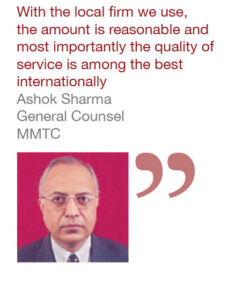
But there is disagreement over the extent to which the Indian legal profession is delivering it.
Edward Neunuebel, general counsel (Asia-Pacific) for Owens Corning, finds that Indian firms can be less than responsive.
Pulling no punches he describes the level of transparency as “terrible” and says that “[Indian law firms] are the least responsive and articulate firms I work with”.
In spite of his comments, Neunuebel continues to engage Indian law firms for India-related matters because the international firms simply farm out the work to their local associates.
At Jones Lang LeSalle, Niven noted that response times can be slow, diluting some of the value for money firms can offer.
And Diana Charlton, corporate counsel at Caterpillar, has found difficulties in establishing what services law firms can provide, at what quality and at what cost.
Hourly fees may be reasonably clear but determining how much it costs to file a land certification, for example, is not clear at all.
“It is good to know what you are getting and at what value,” said Charlton.
It is impossible to paint all law firms in India with the same brush.
As India opens up, however, the profession is adopting norms sought by the international business community.
“An Indian lawyer is where a UK lawyer was 30 years ago,” said Anand Desai of DSK Legal.
As far as he is concerned, it is difficult for lawyers to work on an hourly-fee basis, as the amount of work that one lawyer does in an hour may be entirely different from what another lawyer can output.
“Ultimately, it is better to get an idea of the lump sum,” Desai said. “It’s not a commodity and you can’t treat it as a commodity. It’s a profession,” he added.
In the long term, hourly-rates are likely to spread across the country, said Desai, but that is no guarantee that firms will offer better value for money.
Drabu, at Videocon, has reservations about the value for money his company receives.
“There are more occasions when I have felt that Indian law firms do not offer value for money,” he said.
“However, I would like to clarify that such experiences are also the case with international law firms, though on less occasions.”
In spite of these concerns, many corporate clients are delighted with the value for money they receive.
“Indian law firms are definitely offering good value for money” comments Sharma of MMTC. The hourly billing rates “are lower [than those of international firms] and give good value for money.”
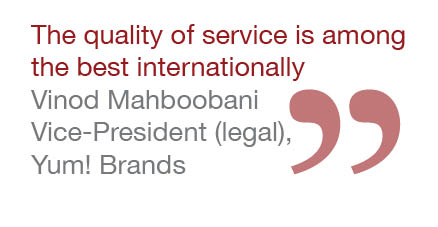
“With the local firm we use, the amount is reasonable and, most importantly, the quality of service is among the best internationally,” he concludes.



























